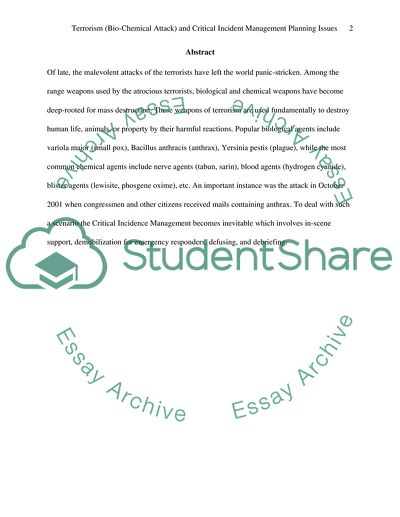Cite this document
(“Preparedness And Response To Biological And Chemical Terrorism Research Paper”, n.d.)
Preparedness And Response To Biological And Chemical Terrorism Research Paper. Retrieved from https://studentshare.org/sociology/1723355-terrorism-bio-chemical-attack-and-critical-incident-management-planning-issues
Preparedness And Response To Biological And Chemical Terrorism Research Paper. Retrieved from https://studentshare.org/sociology/1723355-terrorism-bio-chemical-attack-and-critical-incident-management-planning-issues
(Preparedness And Response To Biological And Chemical Terrorism Research Paper)
Preparedness And Response To Biological And Chemical Terrorism Research Paper. https://studentshare.org/sociology/1723355-terrorism-bio-chemical-attack-and-critical-incident-management-planning-issues.
Preparedness And Response To Biological And Chemical Terrorism Research Paper. https://studentshare.org/sociology/1723355-terrorism-bio-chemical-attack-and-critical-incident-management-planning-issues.
“Preparedness And Response To Biological And Chemical Terrorism Research Paper”, n.d. https://studentshare.org/sociology/1723355-terrorism-bio-chemical-attack-and-critical-incident-management-planning-issues.


